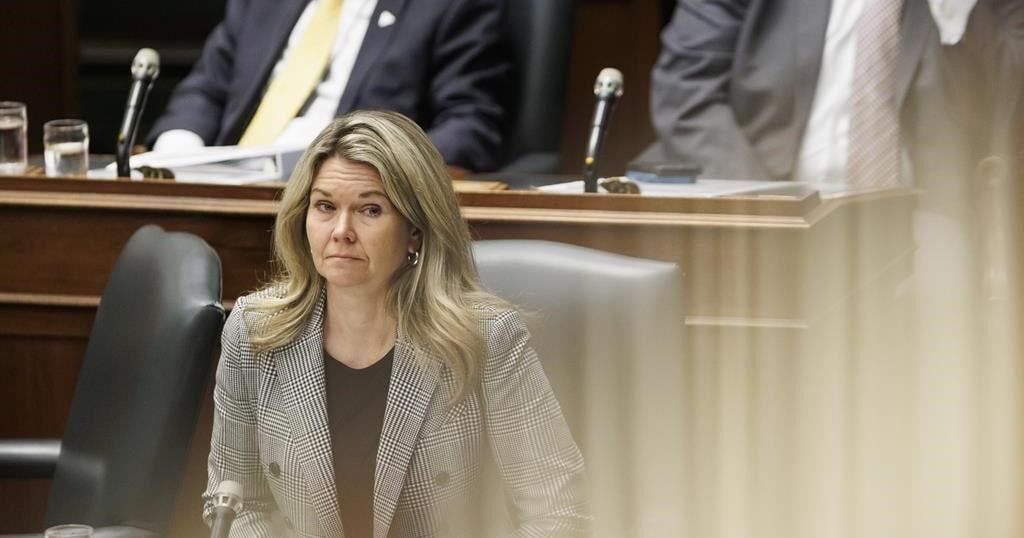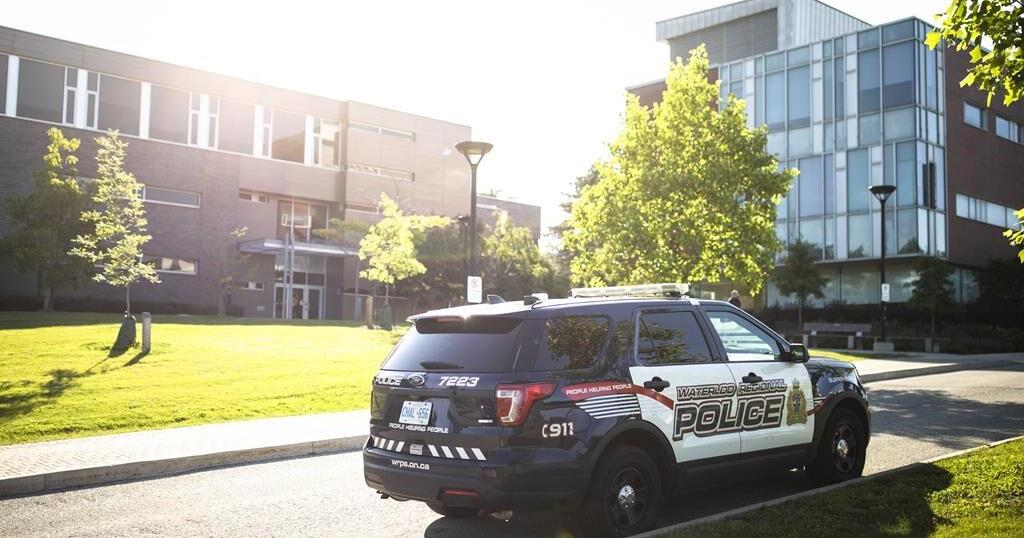TORONTO – Ontario needs more money to properly deliver the national $10-a-day child-care program now and beyond the life of the current agreement, the province’s education minister has told the federal minister in a new letter.
Education Minister Jill Dunlop suggests in her letter to federal Families Minister Jenna Sudds that the sustainability of the program is in jeopardy without more funding.
“Ontario remains deeply concerned about the structural deficit estimated at $1.95B in the first year beyond the current term of the agreement,” Dunlop wrote.
The province has used the federal funding so far to cut fees in half for parents, with a further reduction coming Jan. 1, but says little money is left to help operators add more spaces or implement a wage grid for early childhood educators to help ease a recruitment and retention crunch.
“Frankly, this is their signature program,” Dunlop said after question period earlier this week. “So I’m asking them to bring more money to the table.”
Ottawa, however, does not sound receptive to the request.
“The provincial Government of Ontario signed our agreement eyes wide open,” Genevieve Lemaire, a spokesperson for Sudds, wrote in a statement.
“They knew exactly how much money they were going to get and agreed to certain commitments, including creating thousands of new spots at prices parents can afford.”
Ontario is well behind its target of creating 86,000 child-care spaces by the end of 2026. While there have been about 51,000 new spaces for kids five and under, the age group covered by the national program, only 25,500 of those are within the $10-a-day system.
Carolyn Ferns, the policy co-ordinator for the Ontario Coalition for Better Child Care, said it’s encouraging to hear that Ontario is still eyeing a wage grid for ECEs — having so far rebuffed long-standing calls from workers for one — since it will be impossible for the sector to meet demand for spaces if centres can’t retain enough staff.
“I think that would be really good way forward,” she said.
The province says that a limit on the percentage of for-profit spaces in its deal with the federal government is hampering growth, with Peel Region alone having to turn down more than 2,000 potential spaces under the $10-a-day program because the operators were for-profit.
Ontario has asked the federal government to lift the province’s cap, as it did for New Brunswick, but a protest by a group of for-profit operators concerned about changes to the way Ontario is doling out funding appears to be factoring into Ottawa’s consideration.
“(Ontario) agreed to the ratio of for-profit vs. not-for-profit,” Lemaire wrote. “Yet they act like this is news to them. At a time when for-profit operators are threatening to leave (the program) and closing their doors on families, should Ontario’s ask to us really be to give them more power and more space allocations?”
Zoe Prassoulis is the operator of a daycare in Vaughan, one of a group of centres that closed their doors one day this week in rolling closures to protest Ontario’s new funding formula. She and some other operators are worried that the new model will mean a lack of flexibility and autonomy.
“Unfortunately, what we’re seeing right now is the government that is trying to create this one-size-fits-all government program, similar to the public schools,” she said.
Starting next year, operators will get a main pool of funding based on several factors such as how many spaces they operate, how many children they serve in each age group and the region in which they’re located.
There will also be a “legacy top up,” so existing operators in the program can pay expenses that exceed typical ones, such as higher catering costs to offer kosher food, higher rent based on their location, higher staff costs or equipment for special needs children.
The formula also sets an average eight-per-cent profit for the commercial operators and an average eight-per-cent surplus for non-profit operators.
Some for-profit operators say they are still uncertain about what expenses will be covered.
“It’s like signing on to a job that you don’t know exactly what it entails,” Prassoulis said.
This is not the first time Ontario and the federal government have exchanged letters and finger pointing about underfunding the child-care system. Ferns said it would be great if Dunlop, who is the third education minister in five months, can bring some true collaboration to the role.
“Honestly, the back and forth, I mean, we know how it goes, and it doesn’t go anywhere,” she said.
“It’s just a stalemate. It’s Ontario saying, ‘Per capita funding doesn’t work for us.’ The federal government says back, ‘Well, you’re not even spending everything we’re giving you,’ and they just go around and around in circles.”
Meanwhile, parents like Heather Sheen are caught in the middle.
The daycare her daughter attends — and loves — is one of the for-profit operators considering opting out of the $10-a-day program. She is concerned about the warnings from the daycare that staying in the program may mean having to cut staff or extras such as music.
She is willing to stay at the Toronto daycare where she has built relationships, and whose staff she trusts to care for her daughter, but does not want to be forced into choosing between that and affordability.
“It’s a concern of a lot of parents, and I think that by centres opting out because it’s not working with them and their resourcing and everything like that, I think that that’s a really big step backwards,” she said.
“So I think that that needs to be kind of a priority for government officials to be looking at, because you can’t promise one thing and then make it super complicated and people opt out, and we’re back to where we were before 2022.”
This report by The Canadian Press was first published Oct. 24, 2024.

























